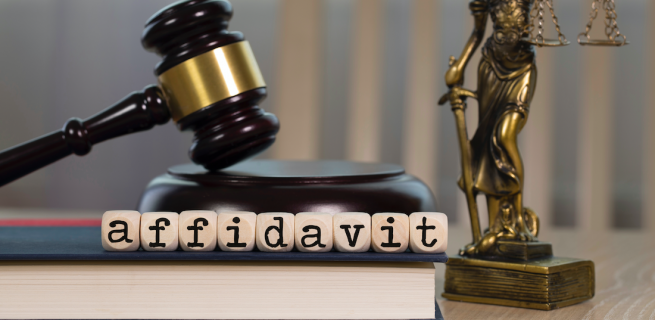By Paul Gregoire and Ugur Nedim
Daughter of former prime minister Bob Hawke, Rosslyn Dillon has recently lodged a $4 million legal claim on her late father’s estate. In the affidavit she’s submitted to the NSW Supreme Court, Ms Dillon details the basis for the claim, which involves a rape allegation coverup.
The future prime minister allegedly asked his daughter not to go to the police, when she told him about being sexually assaulted by his close Labor Party associate, as Mr Hawke was about to make a challenge to become leader of the party, and any controversies could hinder his chances of success.
Ms Dillon alleges late Victorian Labor MLC Bill Landeryou raped her on three occasions, whilst she was working in a position at his office: a job that her father had arranged. Dillon asserts that after a period, the politician started touching her sexually and this eventually escalated to sexual assault.
The allegations of the assaults and subsequent family coverup are outlined in a 25 page affidavit filed with the Supreme Court earlier this month. And of course, Ms Dillon didn’t simply jot down the details on a piece of paper, as there’s a very specific process one must take in writing an affidavit.
What’s written evidence?
When dealing with the NSW court system, there are three main types of written statements that an individual can be required to provide. And the type required depends upon the specific circumstances of a matter, any orders that have been issued, and the level of the court.
The first type is a statutory declaration, which is often referred to as a “stat dec”. It’s a sworn or affirmed statement that’s required when no court proceedings are involved, but a fact has to be proven, such as a name change, or if a person wasn’t driving a car at the time of a traffic violation.
In order to have a statutory declaration or an affidavit sworn or affirmed, an authorised person – a justice of the peace, a solicitor or barrister – will ask a religious person to swear the details are true, or for a non-religious person, they’re asked to affirm that a statement is honest.
The second form of written evidence is a statement. A statement can be required by certain lower courts and tribunals. It involves written evidence to support a case, but it doesn’t have to be sworn or affirmed, rather it simply needs to be signed and dated.
What’s an affidavit?
And the third form of written evidence is an affidavit. It’s a sworn or affirmed account of events that an individual may be asked to provide if they’re involved in a NSW District Court or a Supreme Court of NSW case, as well as some Federal Court cases.
A range of participants in a court case can be asked to write an affidavit: a plaintiff or applicant, a defendant or respondent, a witness, or an expert providing relevant knowledge in relation to a case.
In some cases, those who provide an affidavit aren’t required to appear in court, while in others they must appear, so they can answer further questions. And as mentioned, the author must swear or affirm the document.
The affidavit writer must as well sign it before an authorised person, who must then sign it themselves.
What should an affidavit contain?
The first page of an affidavit should contain all the official details of a case. The sections marked “Court Details” and “Title of Proceedings” are basically the same pieces of information that will be found on all documents relating to a particular case.
While the “Filing Details” section is specific to the person who’s writing the affidavit – their name, their role in the case – and if they have legal representation, the details of the lawyer and their contact number.
The next page is where the author presents their evidence. Firstly, their name, address, occupation and the date of writing should be noted. Then the details of the evidence should be set out in chronological order, in numbered paragraphs, with each paragraph containing just one fact or event.
So, the beginning of an affidavit should look something like this:
- I am the plaintiff.
- On 29 November 2018, I was employed by the defendant James Michaelson.
- At around 3 pm on 6 January 2019, Mr Michaelson asked me into his office and closed the door behind me.
The paragraphs should contain details as specific as possible. And the incidents should be described briefly, so any judges, magistrates or lawyers reading it can gain a clear account of events. An affidavit should only state things the writer directly experienced: what they heard or saw.
How should an affidavit be written?
An affidavit must be written in the first person, meaning from the author’s point of view. For example, “I felt worried when he closed the door behind me, as on every other occasion he’d asked me into his office, he’d always left it open.”
If the affidavit contains a conversation, the exact words spoken should be used like this: I said, “Mr Michaelson, is it necessary to have the door closed?” But if exact words cannot be remembered, it can be a close account, such as, He said something to the effect, “Yes, but what I have to say is…”
Affidavits should be typed – double spaced with 12 point font – or clearly handwritten. And luckily, an affidavit form can be downloaded from this NSW government website page, if you scroll down to affidavit. And from there you can easily fill in the details beside each of the headings provided.
Also remember, the document should not include personal opinions, hearsay evidence – something that someone else told you happened – hypothetical statements, generalisations, offensive or derogatory statements, or your opinion on how the law should apply to incidents described.
Attaching accompanying proof
Often people attach additional documents to their affidavits to support their evidence. These are referred to as annexures. Each one should be noted and identified in the relevant paragraph of the text. For example:
- A letter was on the desk. Annexed and marked “E” is a copy of the letter.
Each annexure must have a cover page that contains a signed statement from an authorised person outlining that it’s the document referred to as “Annexure E” in the relevant affidavit. Then the annexures must be numbered consecutively and filed with the affidavit.
If a large number of extra documents, or a large document, are to accompany an affidavit, it can be presented as an “exhibit”. An exhibit should be noted in the text of the affidavit. It should have numbered pages, a cover page with a signed statement and an index at its beginning.
A lawyer’s touch
As noted, putting together an affidavit requires the assistance of an authorised person, so they can witness the swearing or affirmation of it, sign the document and also verify supporting documents with signed statements.
As well, a lawyer can provide you with advice on what’s been set out in the document, point out where you may have written statements that might be considered hearsay, or have unwittingly provided your point of view on how the law should apply.
So, it’s always best to consult a good lawyer when putting together an affidavit.












I am currently going through court nsw for a Personal Violence Order on a neighbour. Yesterday he and his Lawyer put in an Affidavit which is totally false and without evidence. Very derogatory and untrue with personal attacks which are false. There will be mediation shortly and another adjourned court case on 24th April (this month). What can I do to avoid and further lies in court. Regards Susan